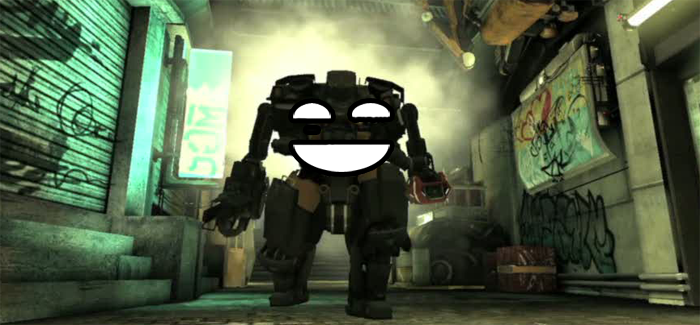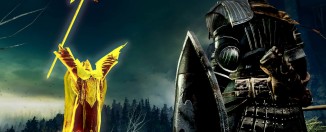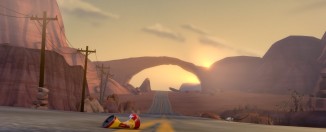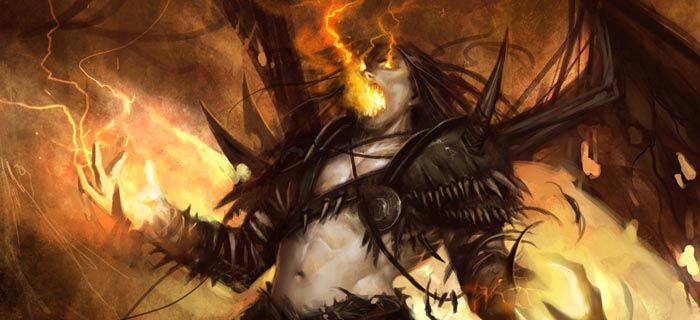Blacklight Retribution: A mix that might work
Having played the closed beta for a couple hours, I’m by no means an expert on the topic of Blacklight Retribution, or any of its many facets. I have no idea what the guns are called, the map names, or even what to call the two teams. For me, it’s a game with guns, and you shoot people. Occasionally there are objectives that you don’t shoot, for some reason. And at all times there’s the option to throw down a little cash for custom parts for your gun. Yes, it’s using a Free-to-Play model, but more on that in a moment. How’s the game actually play?
The gunplay
At its most basic, this is the first person shooter: a team of some kind equipped with guns shooting another team of some kind with guns. Free for all is a team game. You are the team, and only yourself to blame for loss. So how does Blacklight Retribution handle at its core?
It’s a twitch shooter. Anyone who spends any time with it will know that, but it’s not Call of Duty or Battlefield or TF2. It’s something a mix of all of them. You need quick reflexes to excel at this game, as even with the HRV, you’ll be shot when you least expect it.
Guns kill about the same speed as in CoD up close, but along those rare long sight lines, it takes a lot to put someone down. Unlike most CoDs and much of BF3, there is serious recoil on the weapons, so trigger control is essential. In CQC, spraying isn’t necessarily rewarded either. It might be shoddy hit detection, but shooting from the hip like a madman will get you killed more often than not. Pistol switching is more of a last resort than ever in the game as well, as the secondaries, without upgrades, have piss-poor damage.
Any other action than simply walking forward cancels reloads, including jumping, so bunny hopping with an empty magazine is a death sentence unless you can get in for melee. In most situations, it doesn’t come down to that, and I believe it’s a two hit melee system when at full health, but the melee is quick.
Without a real “kill streak”/vehicle support system besides the armor suit you can call in, Blacklight depends on the solidity of its gunplay. When the hit detection is at its best, and you’re on point, as a basic shooter it’s solid.
The HRV: Developer provided wall hacks
Poor Dr. Hax can’t throw any computers at you for seeing through walls in Blacklight. The addition of the Hyper-Reality Visor, or HRV, ostensibly removes the plausibility of camping. Without a perk system, at least in beta, there’s no way to hide from the HRV. Of course, you can sit back in a fixed spawn in certain game modes, but the map design is such that no team can cover all areas of danger. Your killstreak will end, not that it really means anything in the first place.
What’s nice, and annoying, about the HRV is its ubiquity. I cannot count the number of times I’ve forgotten that everyone in the lobby has it, and I set up a nice little trap only to be outplayed because the other guy saw right through me. From a balance perspecitve, not being able to do any more than walk with the HRV up makes sense. The problem comes in taking it down.
There’s a bit of input lag displayed nowhere else in Blacklight sometimes displayed when trying to take down the HRV. That’s lead to some undesirable deaths as well. The strange thing is the lag only appears in the bind for the HRV itself. Sprinting or jumping takes it down immediately.
Either way, there’s still an amount of situational awareness that the HRV both helps and hinders. I don’t think it should ever be a replacement for having a general idea of where the threats are and being prepared for them. However, I see it becoming a crutch that might cause some serious frustration. Camping is discouraged almost to a fault by the Visor, but because the camper also has it, he knows where enemies are coming from, and can move just a little to throw them off.
Maps and game modes?
I can’t speak to either of these effectively, with only three or so hours in game, but I can do my best to list what I know.
As far as game modes, they’re pretty basic. Deathmatch, Team Deathmatch, Domination, King of the Hill and Capture the Flag. Each of them has a little twist, either in nomenclature or objective capture style. The deathmatch gametypes and CTF both have different ways of referring to things to assist in adding to the mood of the game. The dark sci-fi touches are nice.
For King of the Hill, it isn’t a standard, “stand here and get points.” Instead, each team has a capture progress bar. The first team to fill it captures the point, first team to five points wins. For Domination, you need to hack each individual point in a small, math based minigame. This too is a double-edged sword. While I understand their need to differentiate from the norm, sometimes I just want to cap a damn point without having to think too much about it. And I can do that, but the capture will take for fricking ever. And you’ll probably die.
As for the maps, the three I played were well designed, providing multiple routes to each area. There are some power positions that a coordinated team can entrench in, but overall I think there’s no one right way to play any of the maps. Flanking routes are many, and each map is vertical in different ways depending on your location.
The maps all come with what the game calls “weapon depots.” Here you refill health, ammo and upgrade weapons using CP gained by capturing objectives and killing enemy players. The upgrades are relatively inexpensive, save for the armored suit. At 1300 CP, it isn’t going to break the bank, but that can take a while to accrue. Without any time in said suit, I can’t really talk about it.
The F2P Model
I’m a little wary of Zombie’s business model with this game. The success of any in-game purchase system is based on the relative balance of purchased items and access to those same items without spending any money. Both are present in the game’s current state, I think, but I want to break them down a little more.
First, the two currencies that allow the purchase of items. There’s GP, or game points, made just by playing. Then there’s Zen, real world money converted for use solely in Perfect World (the publisher’s) games. Zen purchases are much less expensive, in-game wise, than GP purchases. The problem currently is that the game rewards so little GP per game and permanent purchases cost so much. The logic behind it I understand, but, the margin between Zen vs. GP costs is too large. They can increase GP output tenfold, keep the GP permanent cost the same, and still have a feasible F2P model. As it currently stands, purchasing fictional item A costs 30,000 GP, but 750 Zen. Renting it for a day is 400 GP. You can’t rent with Zen. 400 GP is three to four games worth.
I say an increase of tenfold because rather than having to play 300 games to purchase a single item, you need to play 30. That’s still a considerable investment of time, and all during that time you can’t help but look through the marketplace. And it’s just a single item. If all items cost a similar amount of GP for permanent purchase, or even long rent terms, 300 games is only ten items, and there are literally hundreds, if not thousands, of items in the game.
Which leads to the question of balance. Again, without a full community playing, purchasing, and using the system, I can’t speak to how this will play out, but I know that your base stats are affected by every item you purchase. The increases and decreases are nominal, but that makes a difference in a fight. Whereas in TF2 different items force different playstyles, items in Blacklight change the basic makeup of your character. If the best items in the game are expensive in both Zen and GP, but some players have the ability to just buy them with real money, less well-off players are already at a disadvantage.
I could write a whole article on how I think a good free to play model should be run, that’s different from Valve’s, and the shortcomings to avoid, but that’s a topic for another day. How have you guys liked the closed beta, for those of you who’ve been able to play it? I’m optimistic for the open beta.








Any more details on the gunplay, more specifically the general combat distances and damage falloff? I’ve taken a peek at it, but I’ve sworn off most F2P shooters as it takes way too long to kill someone for me. I know you talk about CQC, but for me a 50m shot is still pretty close-up, and if it takes more than 3-4 hits to kill someone at that range, I might pass this one.
I don’t have access to the source code, no, and if I did, I’d have no idea how to extract gun data.
That said, at maximum distance, it’s between 5-6 hits to kill, provided hit detection works flawlessly and your aim is on point. It’s fast up close and designed to funnel players into CQC, and distances are built for combat/sniper rifles.
For me it’s a game about playing to the strengths of your weapon far more than most. While it’s by no means a slow killing shooter on the order of Bad Company 2, it isn’t Call of Duty kill speed either. The best comparison I can make is Crysis 2.
Thanks. It might be a tad too slow for me, but I still may look into it. I’m simply used to games like Insurgency where a solid 3-round burst is more than enough to take someone down at 150m.
That said, you mentioned specialized rifles? Any good DMR-type rifles or something that’s a solid 3-round burster? I’m still looking for a new FPS that my current (read: old and broken) computer can handle.
Well, specialized in that their completely customizable as far as parts are concerned. I don’t know if there’s a fire-mode switch or not, but I wouldn’t be surprised if it’s in there.
I don’t think a one-burst kill is possible at range, but up close I wouldn’t rule it out.
Seems pretty interesting, X. I gotta check this out… when I have time… eventually.
Dammit.